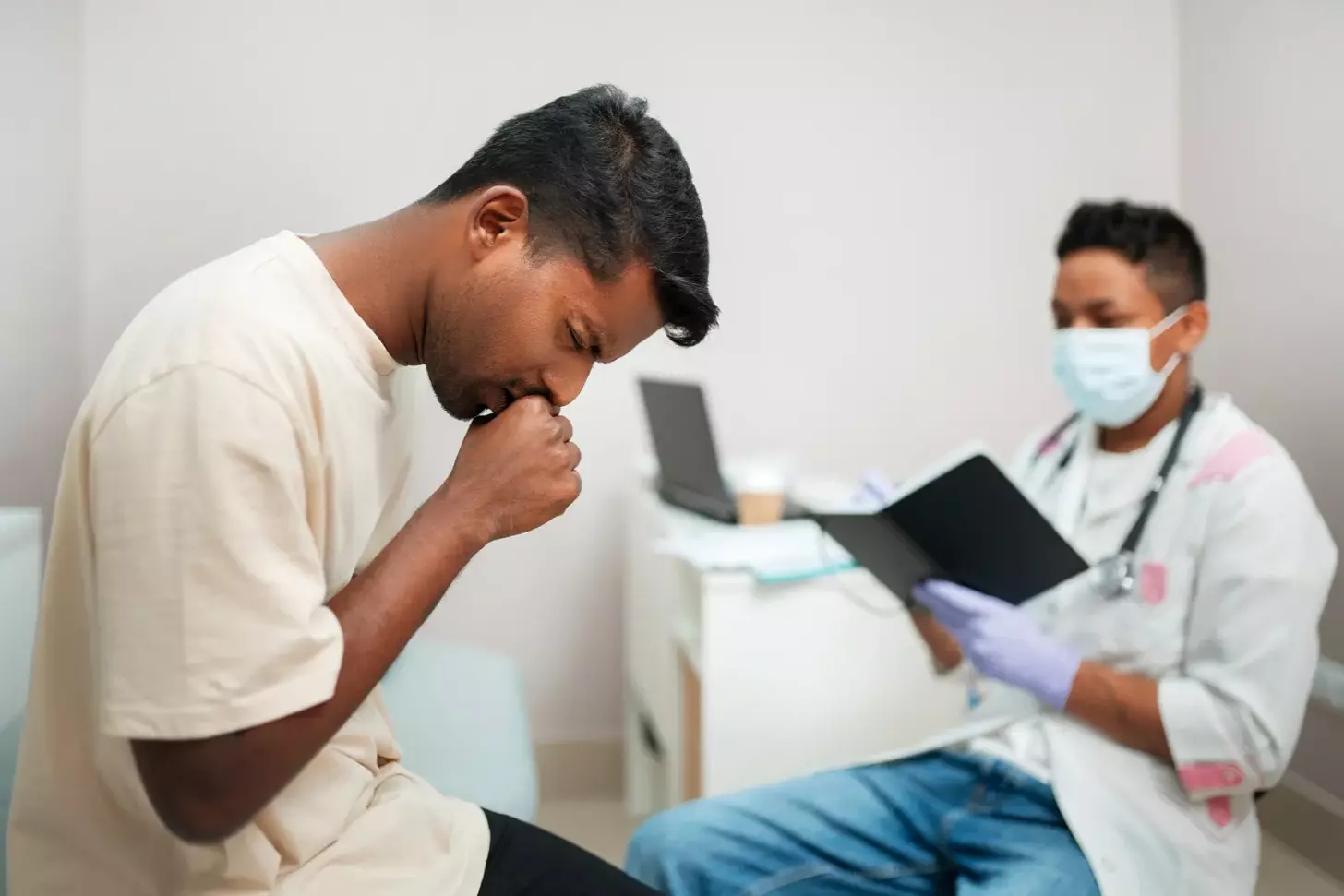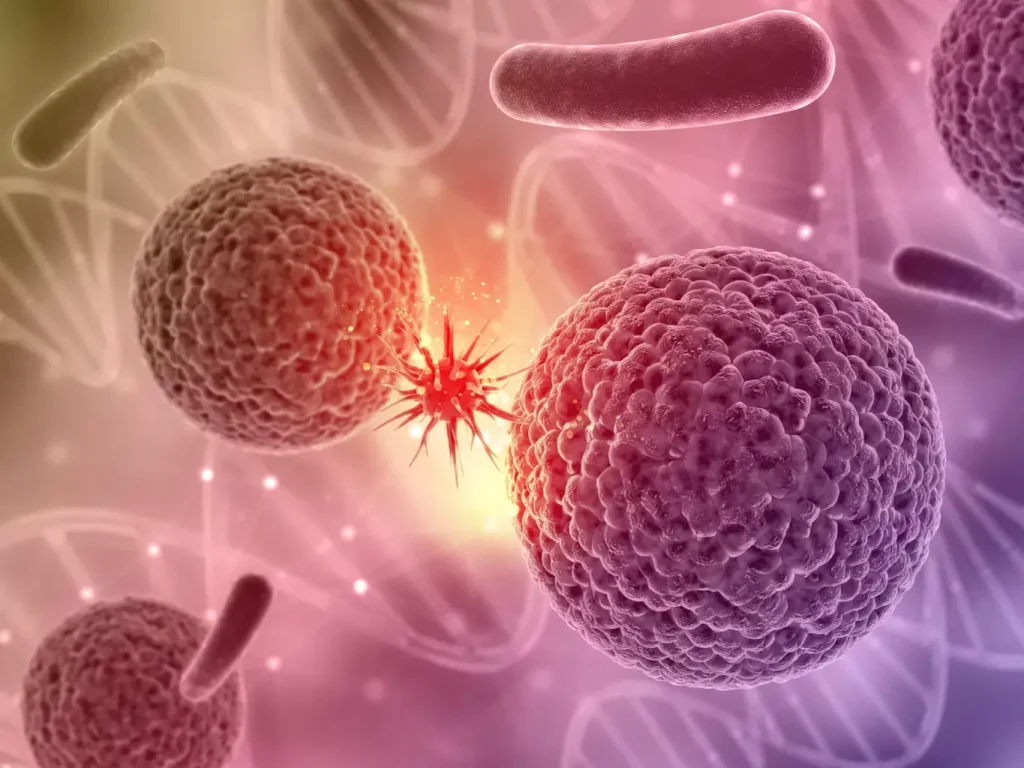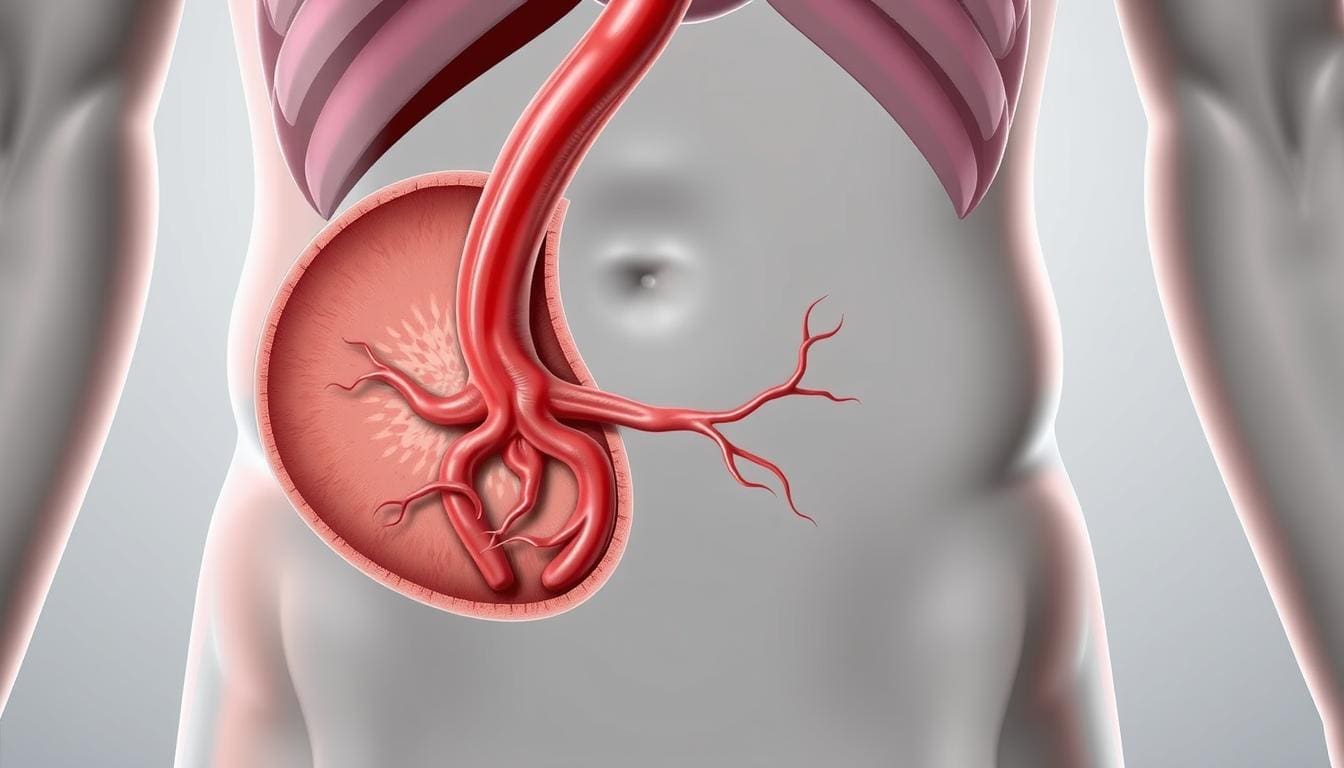Last Updated on November 26, 2025 by Bilal Hasdemir

For over 40 years, Bacillus Calmette“Guérin (BCG) therapy has been key in treating non-muscle-invasive bladder cancer. It works by boosting the body’s immune system to fight cancer cells. This helps prevent the cancer from coming back.
At Liv Hospital, our team is committed to giving top-notch care to BCG therapy patients. We know BCG is very effective but can also have side effects. It’s important for patients to understand these side effects to manage their therapy well.
Key Takeaways
- BCG therapy is a form of immunotherapy used to manage non-muscle-invasive bladder cancer.
- It works by stimulating the immune system to fight cancer cells.
- BCG can cause side effects that need to be managed carefully.
- Comprehensive care is essential for patients undergoing BCG therapy.
- Understanding the side effects of BCG therapy is key for effective management.
Understanding BCG as TB Treatment for Bladder Cancer
BCG therapy was first used to fight tuberculosis. Now, it’s a key treatment for bladder cancer. It uses the body’s immune system to attack cancer cells in the bladder.
What is Bacillus Calmette-Guérin (BCG) Therapy?
BCG therapy is a type of immunotherapy. It uses a weak form of Mycobacterium bovis, the bacteria that causes tuberculosis. This weak form is put into the bladder through a catheter. It makes the immune system fight bladder cancer cells.
Historical Development from TB Vaccine to Cancer Treatment
The story of BCG’s transformation from a TB vaccine to a bladder cancer treatment is amazing. Albert Calmette and Camille Guérin created BCG in the early 1900s. It was first used to fight tuberculosis. Later, doctors found it could also boost the immune system against bladder cancer.
How BCG Administration Works
BCG is given directly into the bladder through a catheter. This is called intravesical instillation. Patients get it weekly for a few weeks, then less often over months or years. This keeps the immune system ready to fight bladder cancer.
| Treatment Phase | Frequency | Duration |
|---|---|---|
| Initial Treatment | Weekly | Several weeks |
| Maintenance Phase | Less frequent | Months or years |
Understanding BCG therapy and its history helps patients grasp their treatment. As we learn more about BCG’s side effects, it’s key to see the benefits and risks it brings.
The Science Behind BCG Immunotherapy
BCG immunotherapy has changed how we treat bladder cancer. It uses the body’s immune system to fight cancer. This method has shown great promise in stopping cancer from coming back and growing.
Mechanism of Action in Bladder Cancer
BCG therapy works by turning on the body’s immune system. It brings in different immune cells and starts a chain of reactions that fight cancer. This process involves BCG directly interacting with the bladder wall, creating a local immune response. It’s a complex process that involves many cell types and pathways, leading to cancer cell destruction.
Immune System Activation Process
The immune system gets activated by BCG in a detailed way. It stimulates cells like macrophages, natural killer cells, and T lymphocytes. This activation leads to the making of cytokines, like interferon-gamma and tumor necrosis factor-alpha, which are key in fighting cancer. Getting the immune system to work well is key for BCG therapy to succeed in treating bladder cancer.
Efficacy Rates and Treatment Outcomes
Research shows BCG therapy greatly lowers the chance of cancer coming back and growing. BCG treatment is proven to be effective, making it a main treatment for high-risk non-muscle invasive bladder cancer. But, it can cause serious side effects, so it’s important to choose patients carefully and watch them closely.
We keep learning about BCG immunotherapy. We aim to find the right balance between its benefits and risks to improve patient results.
Side Effect #1: Urinary Tract Symptoms
BCG therapy often leads to urinary tract symptoms. These symptoms can really affect a patient’s life during treatment. We’ll look at common symptoms, how to manage them, and their impact on patients with bladder cancer.
Frequency, Urgency, and Dysuria
BCG treatment can cause irritative bladder symptoms. These include urinary frequency, urgency, and dysuria. Frequency means needing to urinate more often. Urgency is a sudden need to go. Dysuria can be mild discomfort or severe burning.
One patient said, “Sometimes it feels like I’m running to the bathroom all day.” These symptoms are usually temporary but can be very distressing.
Bladder Pain and Discomfort
Patients often complain of bladder pain and discomfort during BCG therapy. This pain can be a dull ache or sharp. It may be constant or only happen when urinating.
Bladder pain is a significant issue for many patients receiving BCG treatment, affecting their daily activities and overall well-being.
Managing this pain is key to keeping the patient’s quality of life good.
Managing Urinary Symptoms During Treatment
Managing urinary symptoms during BCG treatment involves lifestyle changes and medical help. Drinking plenty of fluids is often advised. In some cases, medications like anticholinergics or pain relievers may be given to help.
We suggest patients work with their healthcare provider to create a personalized plan. This plan can include several steps:
- Stay hydrated to help reduce the concentration of the BCG solution in the urine.
- Avoid irritants such as caffeine and spicy foods.
- Practice good bladder habits, such as double voiding.
By following these steps, patients can manage their symptoms better and have a better treatment experience.
Side Effect #2: Hematuria and Bladder Irritation
Hematuria is a common side effect of BCG treatment. It worries both patients and doctors. Seeing blood in urine can be scary, but knowing why it happens and how to handle it is key.
Causes of Blood in Urine After BCG
Blood in urine after BCG treatment often comes from bladder irritation. The BCG can cause inflammation, leading to hematuria. This condition is usually temporary, but sometimes it lasts longer.
Hematuria can be uncomfortable and worrying. The BCG treatment can cause bladder inflammation, leading to bleeding.
Distinguishing Normal from Abnormal Bleeding
It’s important to tell normal from abnormal bleeding after BCG treatment. Mild hematuria is common and often goes away by itself. But heavy, ongoing bleeding or pain means you should see a doctor.
We tell patients to watch their symptoms and get help if they’re unusual. Knowing the type of bleeding helps decide what to do next.
Treatment Options for Persistent Hematuria
If hematuria doesn’t go away, there are treatments. Medical management can help reduce inflammation and heal the bladder. Sometimes, more tests are needed to find other causes.
We work with patients to manage persistent hematuria. Our goal is to ease symptoms and avoid long-term problems.
Side Effect #3: Flu-Like Symptoms and Systemic Reactions
BCG therapy can cause flu-like symptoms as a side effect. This happens because the immune system reacts to the treatment. It might make the body feel like it’s fighting a viral infection.
Fever, Chills, and Fatigue
Patients getting BCG treatment often feel fever, chills, and fatigue. Fever can be mild or moderate, sometimes high. Chills make you feel cold, even if your body is hot. Fatigue makes you very tired, affecting your daily life.
It’s important to manage these symptoms to keep quality of life high. Drink plenty of water, rest well, and use medicines like acetaminophen or ibuprofen to reduce fever and pain.
Joint Pain and Muscle Aches
Some people get joint pain and muscle aches from BCG therapy. These symptoms are part of the immune response. They can be different in intensity.
- Gentle exercises can help reduce joint stiffness and improve mobility.
- Applying warm compresses to affected areas may provide relief.
- Over-the-counter pain relievers can be used under the guidance of a healthcare provider.
Duration and Management Strategies
Flu-like symptoms from BCG treatment usually last a few days. But sometimes, symptoms can last longer or come back with more treatments.
“Understanding the possible side effects of BCG therapy and knowing how to manage them can greatly improve a patient’s experience.”
To manage flu-like symptoms well, patients should:
- Stay in close communication with their healthcare provider.
- Maintain a symptom diary to track the occurrence and severity of symptoms.
- Follow recommended guidelines for rest, hydration, and medication.
Being proactive and informed helps patients deal with BCG therapy’s side effects. This makes the treatment process more comfortable.
Side Effect #4: Inflammatory Complications
BCG therapy can lead to serious inflammatory complications. These issues need quick medical help. Knowing the symptoms and how to manage them is key for good care.
Granulomatous Reactions
Granulomatous reactions are a common side effect of BCG treatment. These reactions form granulomas, which are immune cell clusters trying to fight off threats. They can happen in places like the bladder and prostate.
It’s important to note that these reactions might look like cancer or infections. So, getting a correct diagnosis is vital for the right treatment.
Prostatitis in Male Patients
Prostatitis, or prostate inflammation, is a side effect in men. Symptoms include pelvic pain, trouble urinating, and fever. It’s important for men to tell their doctors about these symptoms to get the right treatment.
Prostatitis can really affect a man’s life. So, treating it well is a top priority. Doctors might use anti-inflammatory drugs or antibiotics to help.
Epididymo-orchitis and Other Localized Inflammation
Epididymo-orchitis, or inflammation of the epididymis and testicles, is a known side effect. It can cause a lot of pain. Other localized reactions can also happen, based on how a person reacts to the treatment.
It’s critical to treat these conditions quickly to avoid lasting damage and to ease symptoms. Patients should watch for unusual symptoms and see a doctor if they happen.
As healthcare providers, we stress the need to watch patients closely for signs of inflammation after BCG therapy. This way, we can make sure they get the care they need to handle these side effects well.
Side Effect #5: Serious BCG Infection Risks
BCG therapy is good against bladder cancer but can cause serious infections. These infections are rare but can be very harmful to patients.
BCG Sepsis: Causes and Symptoms
BCG sepsis is a dangerous condition where BCG bacteria get into the blood. It causes a body-wide infection. Symptoms include high fever, chills, and feeling very tired.
Key symptoms to watch for:
- Fever above 103 °F (39.4 °C)
- Severe chills and shaking
- Extreme fatigue
- Confusion or altered mental state
Disseminated BCG Infection
Disseminated BCG infection happens when the bacteria spread to other parts of the body. This can affect organs like the lungs, liver, and bones. Symptoms include fever, weight loss, and pain in specific areas.
“The dissemination of BCG bacteria can lead to serious and potentially life-threatening complications. Prompt recognition and treatment are critical.” –
Organ-Specific Complications
Disseminated BCG infection can cause problems in specific organs. For example, lung issues might cause coughing and trouble breathing. Liver problems can lead to jaundice and abnormal liver tests.
| Organ/System | Possible Complications | Symptoms |
|---|---|---|
| Lungs | Pneumonitis, granulomatous inflammation | Cough, dyspnea, chest pain |
| Liver | Hepatitis, granulomatous hepatitis | Jaundice, right upper quadrant pain, abnormal LFTs |
| Bones | Osteomyelitis, granulomatous osteomyelitis | Bone pain, swelling, limited mobility |
In conclusion, BCG treatment is a valuable tool against bladder cancer. But, it’s important to know about the risk of serious infections. Early treatment can greatly improve patient outcomes.
Side Effect #6: Long-Term Bladder Changes
BCG therapy can cause lasting changes in the bladder. These changes come from chronic inflammation and scarring. It’s important to understand these effects and how to manage them.
Bladder Contracture and Reduced Capacity
Bladder contracture is a possible long-term side effect of BCG therapy. It makes the bladder scarred and stiff. This can reduce bladder capacity, leading to frequent urination and sometimes incontinence. Managing these symptoms often requires a multi-faceted approach, including medication and lifestyle adjustments.
For instance, patients may need to:
- Practice bladder training to gradually increase bladder capacity
- Use medications to relax the bladder muscle
- Make dietary changes to reduce urinary frequency
Chronic Cystitis and Fibrosis
Chronic cystitis, or persistent inflammation of the bladder, is another long-term change that can occur after BCG treatment. This condition can lead to fibrosis, where the bladder wall becomes thickened and scarred. Chronic cystitis can significantly impact a patient’s quality of life, causing ongoing discomfort and urinary symptoms.
As noted by a study, “Chronic cystitis following BCG therapy can be challenging to manage and may require ongoing treatment.” Effective management strategies include:
- Anti-inflammatory medications to reduce inflammation
- Lifestyle modifications to minimize symptoms
- In some cases, further surgical intervention
Impact on Quality of Life
Long-term bladder changes can have a profound impact on a patient’s quality of life. Symptoms such as frequent urination, bladder pain, and incontinence can affect daily activities, sleep, and overall well-being. It’s important for healthcare providers to address these issues proactively, providing support and treatment options to mitigate the impact on patients’ lives.
As highlighted by a patient advocate, “Understanding and addressing the long-term effects of BCG therapy is vital for improving patient outcomes and quality of life.” We must consider the holistic needs of patients, including their physical and emotional well-being, to provide complete care.
Side Effect #7: Rare but Serious Systemic Complications
BCG treatment can lead to rare but serious systemic complications. It’s vital to watch patients closely. These complications are not common but can greatly affect health. It’s important for patients to know the risks and symptoms.
Hypersensitivity Reactions
Hypersensitivity reactions to BCG therapy are rare but can be severe. Symptoms include fever, chills, and respiratory distress. In extreme cases, patients may face anaphylaxis, a life-threatening condition needing immediate care.
Pulmonary and Hepatic Complications
Pulmonary complications, like pneumonitis, can happen in rare cases. Hepatic involvement, showing as abnormal liver function tests or hepatitis, is another risk. We keep a close eye on patients for these signs, as quick action is key.
Renal Involvement and Other Distant Effects
Renal involvement, though rare, can show as nephritis or other kidney problems. Other distant effects might include arthritis or vasculitis. Spotting these complications early is vital for effective treatment and to prevent long-term harm.
We stress the need for patient education and monitoring. This helps identify and manage rare but serious systemic complications linked to BCG treatment.
Conclusion: Weighing the Benefits Against Side Effects
BCG therapy is key for treating non-muscle-invasive bladder cancer. It helps lower the chance of cancer coming back and spreading. But, it also has side effects that need to be understood.
Patients and doctors should think about the good and bad of BCG treatment. The benefits, like treating bladder cancer well, must be weighed against the possible downsides.
Managing side effects is important for the best results from BCG therapy. Knowing the risks and how to lessen them helps make this treatment more effective.
What is BCG treatment for bladder cancer?
BCG (Bacillus Calmette-Guérin) treatment is a type of immunotherapy for bladder cancer. It uses a weakened tuberculosis bacteria form in the bladder. This helps the immune system fight cancer cells.
How is BCG treatment administered?
BCG treatment goes directly into the bladder through a catheter. This method, called intravesical instillation, lets the BCG solution meet the bladder lining. It then triggers an immune response against cancer cells.
What are the common side effects of BCG treatment for bladder cancer?
Side effects include urinary issues like frequent urination and pain. You might also see blood in your urine, feel flu-like, or have inflammation. Serious infections and long-term bladder changes are rare but serious risks.
How can urinary tract symptoms be managed during BCG treatment?
To manage symptoms, drink plenty of water and avoid caffeine and spicy foods. Use medications as advised by your doctor. Always talk to your healthcare provider about your symptoms.
What is the risk of serious BCG infection?
Serious BCG infections, like BCG sepsis, are rare but dangerous. Watch for symptoms like high fever, chills, and extreme tiredness. Seek medical help right away if you notice these signs.
Can BCG treatment cause long-term changes to the bladder?
Yes, BCG treatment can cause lasting bladder changes. These include bladder contracture, reduced capacity, and chronic cystitis. Discussing these changes with your healthcare provider is important for managing them.
Are there any rare but serious systemic complications associated with BCG treatment?
Yes, rare but serious complications include hypersensitivity reactions and problems with the lungs, liver, and kidneys. Be aware of these risks and report any unusual symptoms to your doctor.
How effective is BCG treatment for bladder cancer?
BCG treatment is effective for non-muscle-invasive bladder cancer. It reduces recurrence and progression risk. Effectiveness depends on cancer stage and grade.
What is the historical background of using BCG for bladder cancer treatment?
BCG was first made as a tuberculosis vaccine. It’s now used to treat bladder cancer, showing how a therapy can be repurposed to fight cancer.
How does BCG immunotherapy work to fight bladder cancer?
BCG immunotherapy boosts the immune system to attack bladder cancer cells. It activates immune cells to target and destroy cancer cells in the bladder.








